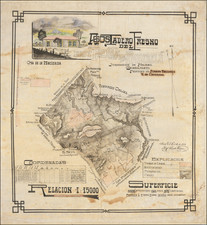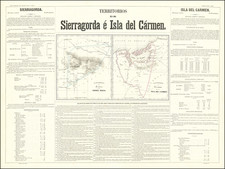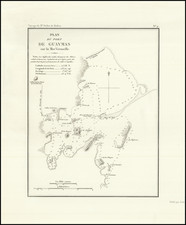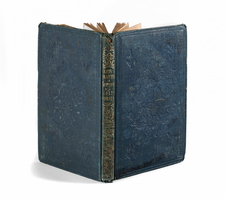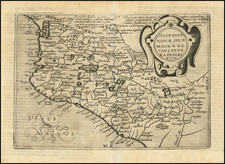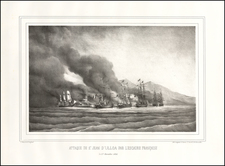Plan showing the fabled Puente de Mexico and made by famous Puebla architect Antonio Santa María de Incháurregui
This is a detailed and decorated plan by a skilled architect of a ranch located near the city of Puebla, not far from the Tlaxcala-Puebla state border. It includes a rare rendering of the supposedly haunted Puente de México.
The mapmaker, Antonio Santa María de Incháurregui, advertises himself in his signature (just below the scale to the left) as a master of architecture. Incháurregui was also a trained surveyor, as this plan attests. He is best known for the Casa de Alfeñique, one of the most iconic buildings in Puebla. Today the Baroque-style building houses a regional museum, but it was originally designed as a house that was supposed to resemble alfeñique, a Spanish caramel-like dessert.
His plan shows the pastoral (green) and agricultural (yellow) land of the ranch, with two creeks traversing the land. The plan is south-oriented, as shown on a large compass rose to the left. There are labels on the principal roads, including the Camino Real. Buildings are drawn with artistic skill, offering insight into the architecture of the period. Trees surround most of the buildings and hills are marked in strokes of green.
The long title running across the top of the plan explains the location and jurisdiction of the ranch, called Nuestra Señora de Guadalupe Posada. The area is overseen by the officers of the local army regiment. The title names Don Ygnacio Maneyro, a colonel, and Don Luis Ribero, a lieutenant. The former was José Ignacio Maneyro, who joined the Provincial Dragon Regiment of Puebla as an adjutant major in 1796. Little is known about the latter, Ribero. The Regiment was founded in 1764 and was a mounted regiment.
One of the areas of local detail is in the upper right corner. A river meanders under a bridge with three arches. At either entrance to the bridge is a peaked archway under which carriages and wagons could pass. Now, cars and trucks drive under those arches. The bridge, then as now, is called the Puente de México, the Bridge of Mexico, and it leads from Puebla to Cholula.
Construction on the bridge began in 1708 and continued throughout the eighteenth century. It measures 18 meters tall. The bridge was made so strongly that it is still in use today, although it has suffered some damage over time from earthquakes, as it did in 1999.
The bridge is famous not only because it is a historic monument, but because of the ghost stories that swirl around the bridge like the current swirls under it. Some call it the Puente de Ánimas, the Bridge of Souls. This is because the local current was notorious for snatching those who would attempt to cross the river. A previous attempt to build a bridge ended in tragedy when a storm whipped up the river. The waters and winds demolished what had been built to date and the pillars fell into the water, taking with them the men who had been working at the time. It is these souls that supposedly still haunt the bridge today.
Detailed features, like the bridge, drawn by a regionally-important architect make this map a unique object.
Transcript of text in lower right corner:
Según parese y sé persibi de la presente Figura forma un Peligero irregular de diez lados baforos(¿) linderos, numbeos, y dimensiones que se hayan subcritos, como asi mismo ser compuesta de diez triángulos, los que medidos con arreglo á ordenanza y Arte producen de Area dos cuentos cuatrocientos noventa y dos mil trecientas ochenta y ocho vs(¿) cuadradas superficiales que componer cuatro Cavallerías, y un solar cuadrado de dostentasta(doscientas?) inta y cuatro varas por lado, por quales por ser de media calidad, y entre ellas haber algunos manchorros de piedra de Cal, que son útiles, atendiendo su cituacion aprecio á seiscientos perg(¿) Cavallería que importan dos mil cuatrocientos sinquenta y cuatro pesos, a los que agregando el valor de quinientos pesos de medio salco(sales?) de Agua que produse un ojo que se haya en otras tierras, como también dos mil ciento veinte y siete pesos, precio de la casa que tiene el citado Rancho, es visto asierrde(¿) el total importe del Casco de esta Finca la Cantidad de cinco mil ochenta, y un perots(¿). A si lo juro en solemne forma de Derecho.
Inscription below scale in lower left:
Por Don Antonio de Santa Maria Inchaurrigui, Maestro mayor de Arquitectura de esta N. C. y Agrimentor Gral de tierras
y Aguas por su Magestad (L. D. G. M. A.).
(signature)
Puebla y Septiembre 20 de 1800 años









